The violin
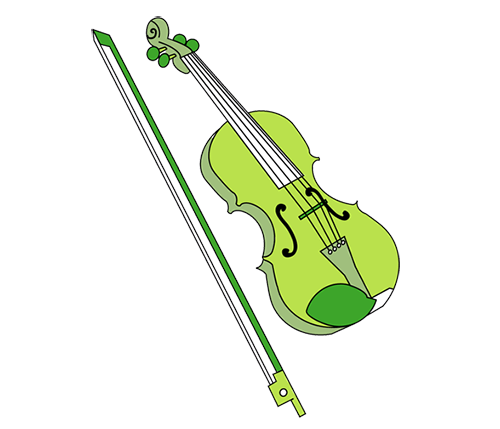
The violin used in Indian classical music is similar to the one used in Western classical traditions. In Carnatic music, the tuning is the same. The tuning is slightly modified for the Hindustani violin, but the playing style remains the … ›
The Veena
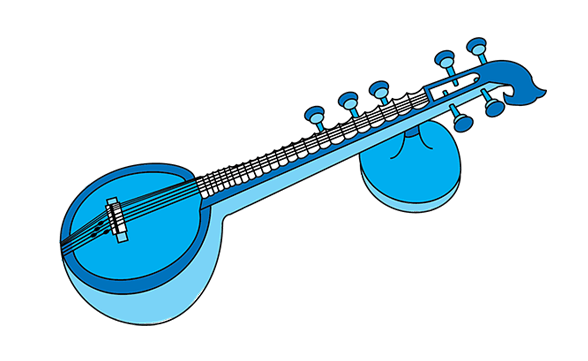
The veena is among the oldest of Indian musical instruments. From the references to Vedic writings, it can date back to around the first millennium B.C. Temple sculptures from the 2nd century B.C. show a type of veena being played. … ›
The Udukkai
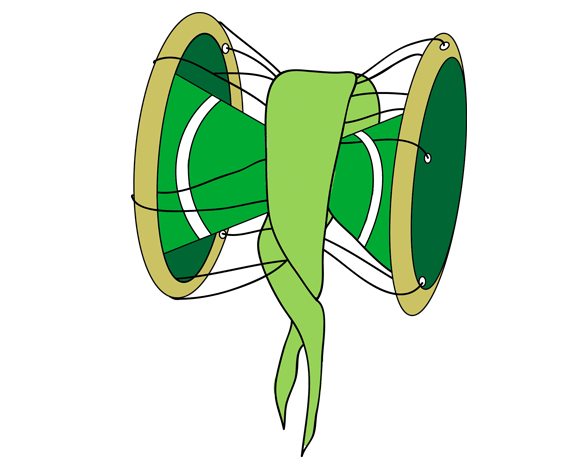
The udukkai is an hourglass shaped, membranous drum used in devotional and folk music throughout India. The udukkai is played with the hand and the pitch may be altered by tightening the lacing in the middle. It is made of … ›
The Thavil
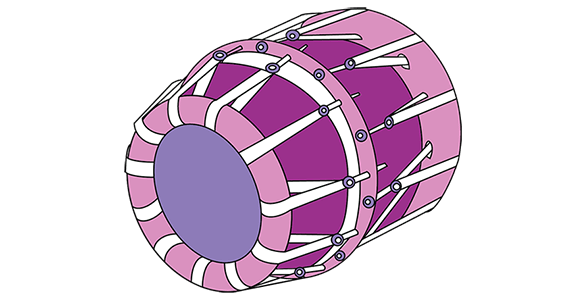
The thavil is a percussion instrument used for accompanying the nadaswaram, a wind instrument used in Hidu religious music and as a solo instrument in Carnatic music. It consists of a barrel shaped drum carved out of jackfruit wood, with … ›
The Tar Shehnai

The Tar Shehnai is an esraj (bowed string instrument) with an added mechanical amplifier. This amplifier fixed to the sound board of the instrument is modeled on the gramophone sound box to project a stronger, more directional sound. The amplifier … ›
The Tanpura
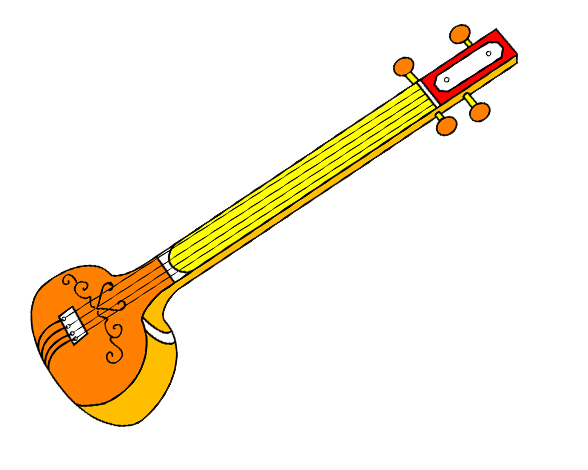
The tanpura is an instrument that acts as the reference chord in Indian classical music. It has a resonator and 4 strings, but no frets, as the notes are always played whole. The name is derived from tana or musical … ›
The tabla
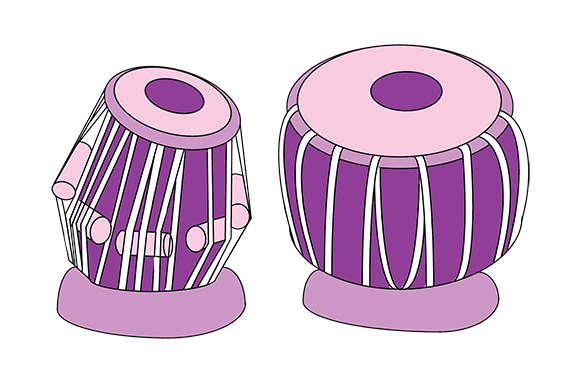
The tabla is the percussion instrument most commonly used in north Indian classical music. The instrument consists of two drums, called bayan (left) and dayan (right) as per the hand they are most commonly played with. The drums consist of … ›
The swarmandal
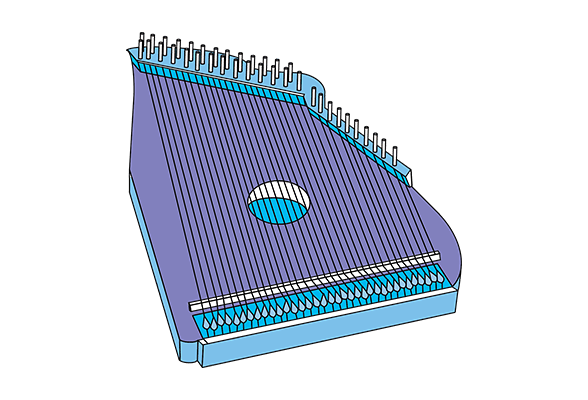
The swarmandal is a harp like instrument that is most commonly used as an accompaniment to Hindustani vocal music. The name originates frim ‘swara’ (note) and mandal (group), an indicator of the large number of notes it can produce. Depending … ›
The Sursringar
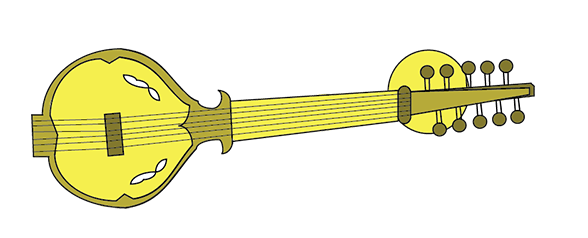
The sursringar is a rare string instrument that is used as a Hindustani solo instrument. It was used in Dhrupad music in the 19th century, and is regarded as a descendent of the Rabab. The sursringar has a body made … ›
The Sitar
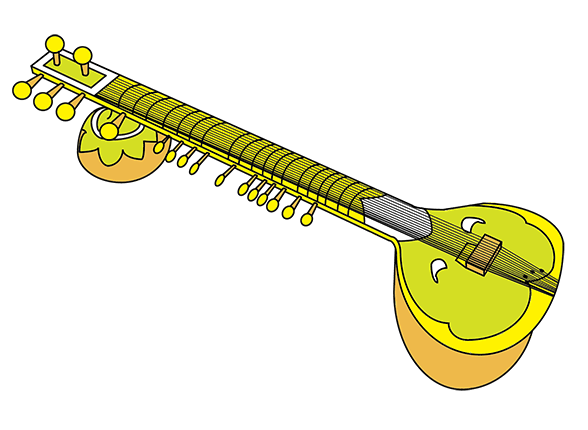
The sitar, a stringed instrument played by plucking, is one of the most well known Indian musical instruments. It has gained popularity both in India and the west over the past few decades. The origin of the sitar is however … ›
The Sangu

The sangu is a conch shell primarily used in religious music of Hinduism and Buddhism. The shell is got from the shell of a large predatory sea snail, the Turbinella Pyrum that lives in the Indian ocean. The main body … ›
The Sarod
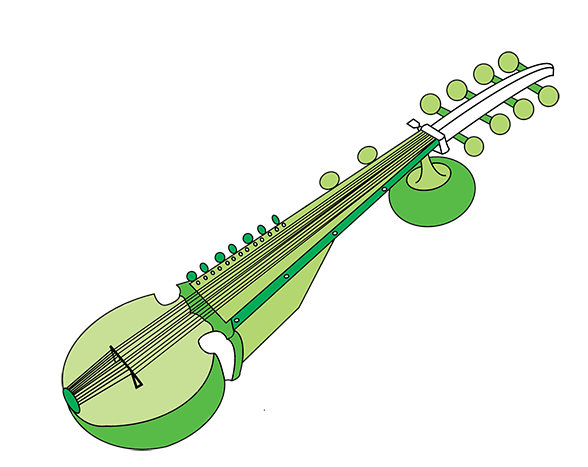
The sarod is a lute like instrument that has connections with the lute like instruments of the Christian era, the rudra veena and the Afghan rabab. It is made of a single block of wood, with a resonator, a neck … ›
The Sarangi
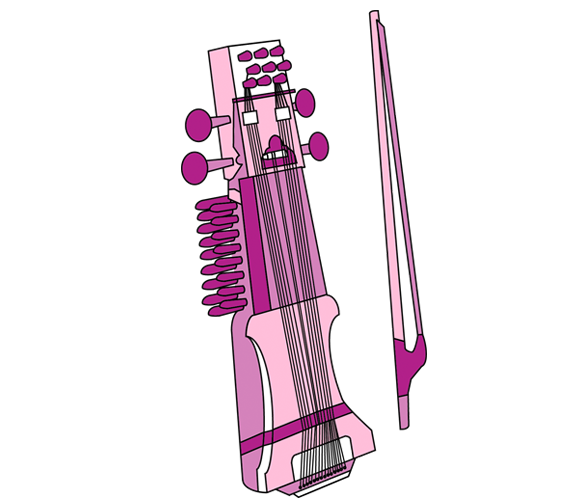
The Sarangi is a fretless, bowed string instrument used in Hindustani classical music and folk traditions of north India. Although precise information about the Sarangi is missing, it may have come to India from Central Asia as the bowed Rabab. … ›
The Santoor
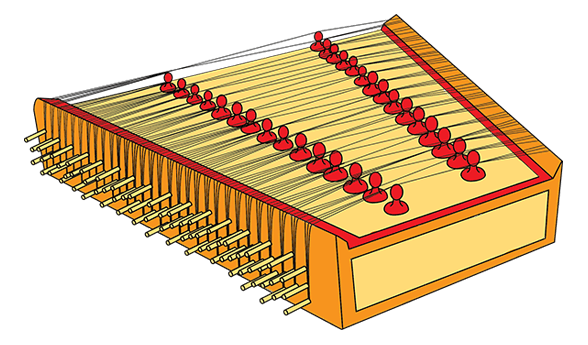
The Santoor’s name comes from the name Shata- tantric, meaning a Veena of hundred strings. It consists of a hollow box with twenty five bridges, each having four strings resting on it. It is played with the help of two … ›
The Nadaswaram
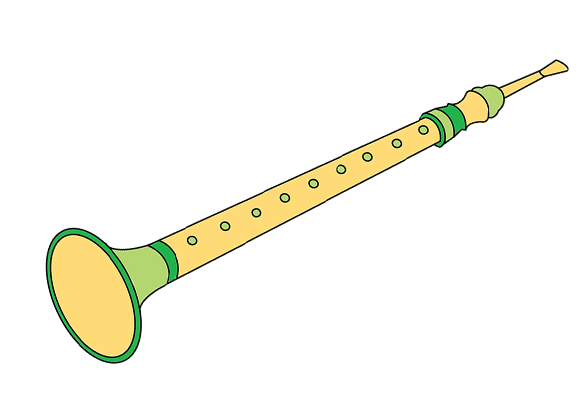
The nadaswaram is a wind instrument made of wood and metal that is found in both classical and folk traditions in South India. The name is got from ‘Nada’ or pleasing sound and ‘Swaram’ meaning note. The sound of the … ›
The Mridangam

The mridangam can be traced back to ancient Indian mythology, when it is believed that the sound it created matched and represented the movement and dances of the Gods! The name comes from the Sanskrit words “Mrid” and “Ang” which … ›
The Morsing
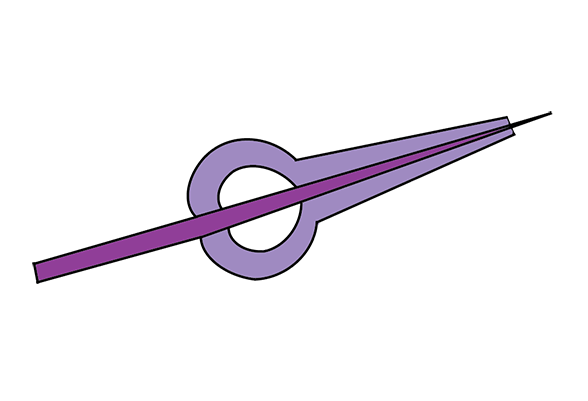
The morsing is a Carnatic percussion instrument. It is a tiny instrument held in the left hand, shaped like prongs with an additional metal stick running through the length of the instrument. The morsing is played by holding the prongs … ›
The Kanjira
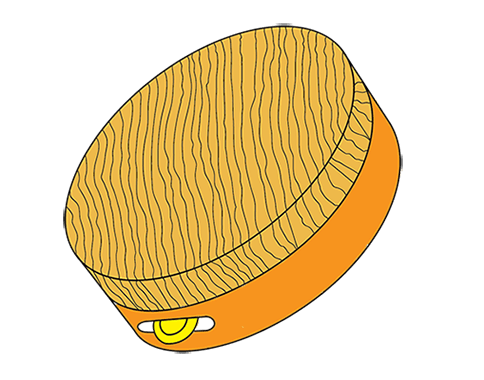
The kanjira is a small handheld drum that resembles a tambourine. It consists of a circular wooden frame of jack wood, with a diameter of seven to eight inches and depth of approximately two inches. One face of the frame … ›
The Harmonium
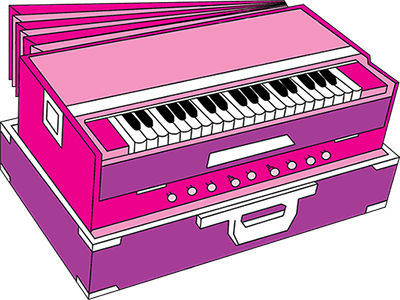
The harmonium is an instrument that has its origins in the period of British rule in India. It is a modified version of the reed organ, with keys like the piano and bellows to pump air into the instrument. The … ›
The Ghatam
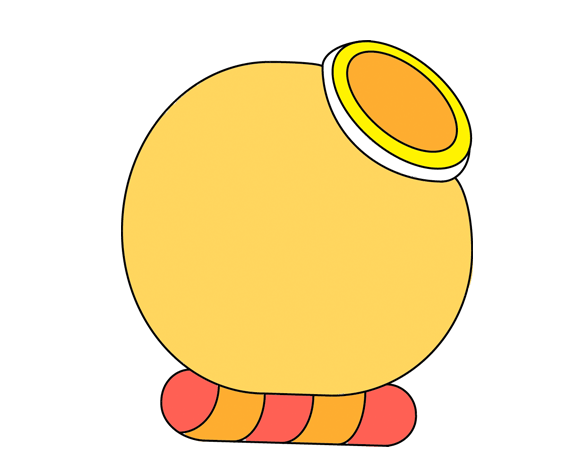
The ghatam is an ancient percussion instrument in used Carnatic classical music. The ghatam consists of a clay pot reinforced with brass, copper and iron fillings. The pitch of the ghatam is unique and can only be slightly modified by … ›
The E-Tanpura
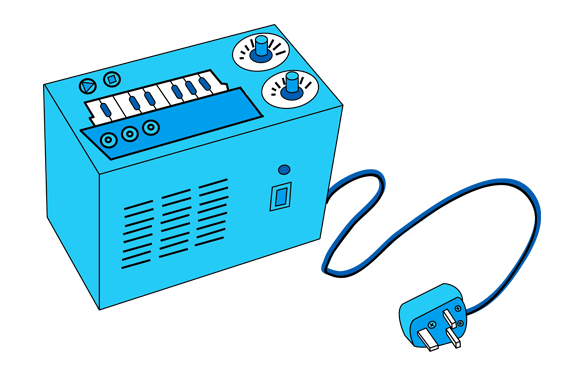
An e-tanpura are often used in concert by many performers as a substitute for tanpura performers. When tanpura performers are not available, using an e-tanpura is easy way to generate this sound. The e-tanpura has a variable pitch function to … ›
The Dilruba
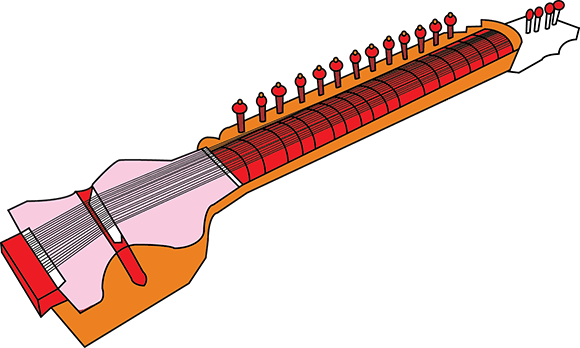
The dilruba or Esraj is a string instrument found in certain northern and western states of India. The dilruba and esraj are slightly different from each other, with the latter being more commonly found in east and central India, and … ›
The Bansuri
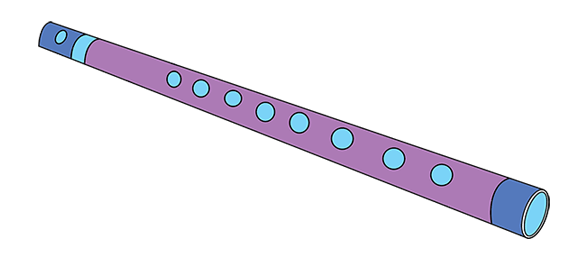
The bansuri is a flute made of a single hollow shaft of bamboo. It can be transverse or fipple, although the transverse variety is used in Indian classical music. The word bansuri originated from Baans (bamboo) and Sur (musical note). … ›
Konnakol
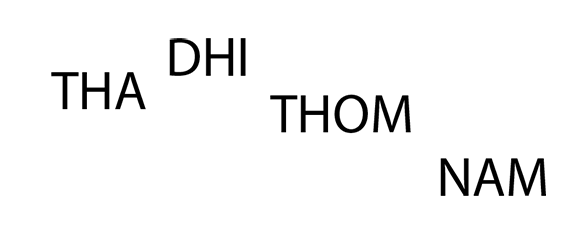
konnakol is the art of recitation of ‘solkattu’ which are the vocal syllables of the mridangam. The word comes from Koni (to recite) in Telugu. This word was adopted in the Tamil language and joined to ‘Kol’ (to rule). Konnakol … ›
Hindustani vocal (male)

The voice, and singing, are very important in Indian classical music. Students are taught through singing in most cases, and melodic instruments imitate the sound and nuances of the human voice in performances. Following the pattern of a traditional indian … ›
Ghungroo
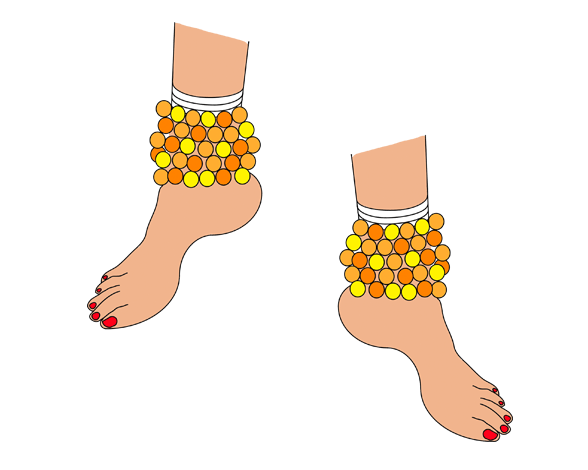
Gunghroo comprises of several small metallic bells that are strung together and tied around the feet of dancers in order to accentuate and complement the rhythmic aspects of dance. Ghunghroos are used in folk music, bhajans and abhangs to add … ›
Carnatic vocal (female)
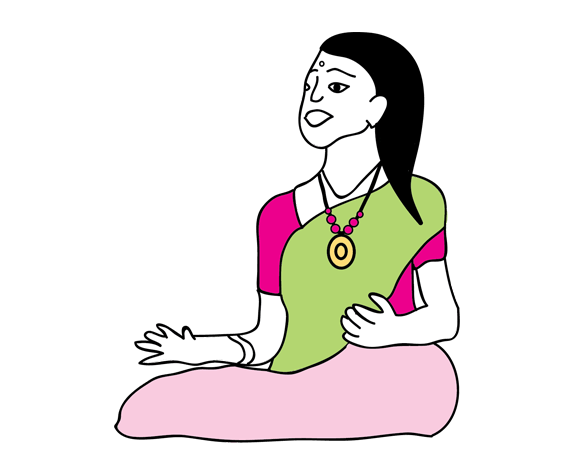
The voice, and singing, are very important in Indian classical music. Students are taught through singing in most cases, and melodic instruments imitate the sound and nuances of the human voice in performances. In Carnatic music, or South Indian Classical … ›